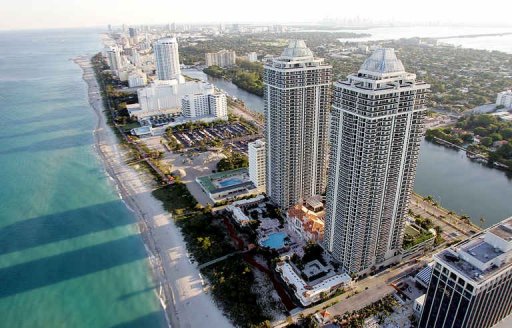
The world’s 136 largest coastal cities could risk combined annual losses of $1 trillion (750 billion euros) from floods by 2050 unless they drastically raise their defenses, a study warned Sunday.
Current losses are about $6 billion per year, with four cities — Miami, New York and New Orleans in the United States and Guangzhou in China — incurring 43 percent of the costs, according to a report in the journal Nature Climate Change.
World Bank economist Stephane Hallegatte and colleagues composed a loss risk scenario based on city population growth as well as different levels of sea level rise, protection upgrades and subsidence — the sinking of surface areas often linked to the extraction of oil or other ground resources.
Assuming cities improve their protection to contain the flood risk to current levels, and based purely on the projected growth of city populations and the assets accumulated there, the team warned of a nine-fold increase in losses to $52 billion per year by 2050.
When the team adds the effects of climate change-induced sea level rise and subsidence, the figure increases to between $60 and $63 billion per year.
“With no adaptation (of flood protection), the projected increase in average losses by 2050 is huge, with aggregate losses increasing to more than $1 trillion per year,” said the study — a worst-case-scenario outcome that would roughly equate to the 2012 GDP of Iran.
But even the best protection in the world won’t eliminate the risk, said the study.
While higher dykes can reduce flooding, the magnitude of losses when they do occur will continue to rise.
“We have more and more people depending on these protections. That means that if we have a dyke rupture, as there are more people behind the dykes, we will have ever bigger catastrophes,” Hallegatte told AFP.
With protection upgrades, the cities with the highest projected annual losses by 2050 were Guangzhou ($13.2 billion), Mumbai ($6.4 billion) and Kolkota ($3.4 billion) in India, Guayaquil ($3.2 billion) in Ecuador and Shenzhen ($3.1 billion) in China.
For Guangzhou, this represented an 11 percent rise on 2005 losses and for Kolkota 24 percent, said the authors.
Number six on the list was Miami, with projected annual losses of $2.5 billion, followed by Tianjin in China with $2.3 billion, New York with $2 billion, Ho Chi Minh City in Vietnam with $1.9 billion and New Orleans with $1.9 billion.
Rich cities, many of them in areas more at risk from flooding, can generally afford better defences than poor cities which are over-represented among those that risk the biggest losses, said the study.
Amsterdam, for example, has about $83 billion of assets exposed to extreme flooding — yet its average annual loss was $3 million due to having the world’s best flood defences.
New Orleans, on the other hand, has annual losses estimated at $600 million, though improvements have been made since Hurricane Katrina in 2005.
According to Hallegatte, the team has calculated that about $50 billion per year would be required to boost flood protection for the 136 cities in the report — “far below” the estimated losses.
“Failing to adapt is not a viable option in coastal cities,” added the report.












